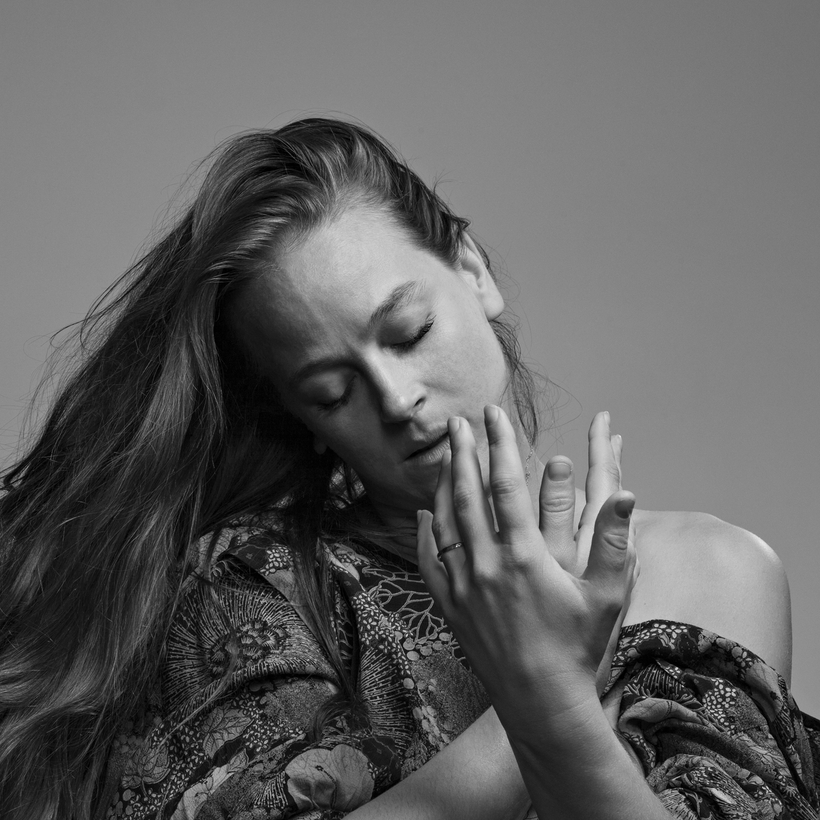“It takes unending strength to feel in a world that is trying to make us numb,” says the choreographer Bobbi Jene Smith, who does not mince words. With steady existential deliberation, she discusses her upcoming evening-length work, Pit, scheduled to premiere at the Paris Opera Ballet on March 17. The locus of the dance, Smith explains, “is not only a physical place but a semantic one—pitting people against each other, and being in the pits.”
The Iowa-born artist, whose work has the searing intimacy of the German postmodernist Pina Bausch and shades of the lyricism and virtuosity of the Canadian Crystal Pite, spent her formative years in the Dance Division at Juilliard, followed by 10 years of dancing in Israel’s Batsheva Dance Company, where she was a disciple of the Israeli luminary Ohad Naharin. “I didn’t know we were allowed to move like that,” Smith says of his breakout movement methodology, the “gaga,” which requires a relentless pursuit of authenticity from each dancer. Last year, when Aurélie Dupont, the former director of Paris Opera Ballet, commissioned this new work from Smith, she ascended to another level.

Smith is collaborating on Pit with her husband, Or Schraiber, a fellow Batsheva alumnus, with whom she has a daughter. “It’s a trip, let’s say that,” Smith says with a laugh. “Or pushes me into places I wouldn’t normally go, and I do the same for him. When our movement collides, we’re speaking another language.”
Pit has a cast of more than 10 male dancers and just a handful of women, all clad in bespoke costumes designed by the house of Alaïa. “I love playing with clichés—like strong men, weak women—and trying to disrupt them,” says Smith. “The minute the audience feels they have grasped the power dynamics, the lead changes.” A single brutalist piece of cement provides the setting for a loose narrative (a hero’s journey and tragic downfall) from which Smith mounts her philosophical interrogations. “I am trying to find the beauty and the love in this cold pit of a world. Then examining how far it can go into brutality and destruction.”
The music is a meeting of new and old. With her score for orchestral ensemble, the experimental New Zealand composer Celeste Oram creates the mechanical and melancholic world of Pit. She confronts the audience, says Smith, with “sounds we would never expect from an orchestra. Like, how can an orchestra sound like a machine?” Interpolations from Sibelius’s Violin Concerto, played by a single violinist onstage, act as a counterforce to “pull us out of the darkness.” Of the Paris Opera Ballet dancers, Smith says, “the emotional narrative inside their bodies is so present.”

Both Smith and Schraiber are established filmmakers and editors, and Smith links her intensity in and out of the studio to her experience with film and her eye for the dramatic. In fact, she says, one of the couple’s more unusual creative strategies involves “making a film of the dance first, then making the live work off of it. In the studio we are always asking everyone to think, ‘What if this were a film?’ It pushes us to do things onstage like fast cuts, jump cuts, and flipping the sequencing.”
Smith left Israel in 2015 to focus on making new work; she and Schraiber now live in New York. Her reputation is that of a choreographer that dancers want to work with. “I feel how much the dancers are actually leading the room and how much power they have. It’s a beautiful thing, and I learn so much in following their lead. Sometimes the hardest thing is to listen to what’s already there, instead of trying to insist on what’s not.”
Pit will be on at the Paris Opera Ballet beginning March 17
Genevieve Marks is a London-based dance critic, feature writer, and choreographer. She is also a recovering former ballet dancer

